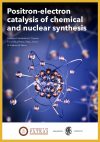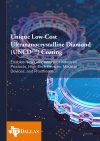Elena Makarova, Professor at the Centre for Teacher Education and at the Department of Education at the University of Vienna, outlines the obstacles young women have to overcome if they aspire to a career in the STEM fields
Makarova and her colleagues in Switzerland have conducted extensive research on the gender-atypical career choices of young women in secondary schools, specifically STEM subjects. The study “Gender-atypical career choice of young women” was funded by the Swiss National Research Foundation and was a part of the Swiss National Research Program (NRP60) on Gender Equality.
Makarova says: “Young women who aspire to a STEM career have to overcome a variety of hurdles and conquer gender stereotypes on their way to becoming a professional in a male dominated career field”. She further explains, what makes it difficult for young women to pursue a gender atypical career in Switzerland.
Perception of science as a male domain
Secondary school students not only have a stereotypical perception of both genders and personality traits associated with women and men, but also a gender stereotypical image of science. In the perception of female students women are labelled as being soft, dreamy, lenient or frail, whereas mathematics and physics are seen as being hard, sober, strict or robust. Thus, young women are strongly challenged in relating the masculine image of science to the self. This image of science not only endangers young women’s identification with this academic domain but in the long term also negatively affects young women’s interest in science, their academic self-concept in the science subjects and lastly their decision to choose a career in science-related fields.
Gender stereotypes in the science textbooks
In our study, we analysed the textbooks for mathematics, physics and chemistry in secondary schools with respect to the numerical representation of female and male characters in the text and illustrations as well as the context in which both genders appear. It was obvious that male protagonists and the everyday experience of male students vastly dominated the representation of gender in the science textbooks. Moreover, persons of female and male gender were presented in highly stereotyped roles and activities. It can be assumed that the textbooks are less likely to appeal to young women and to encourage them to pursue science. Thus, issues of gender mainstreaming should be given more consideration by textbook editors and authorities who approve these teaching materials.
Prejudice towards women in STEM careers
Young women apprentices learning a STEM profession are at risk of experiencing discrimination during their vocational education and training. In order to adjust to a male-dominated career field and to combat prejudice in the workplace, young women need to outperform their male co-workers and need to be resilient towards gender stereotypical beliefs and attributes in the workplace or to assimilate within the gender atypical career field. Thus, training companies which provide apprenticeship programs in STEM fields should be strongly challenged to combat sexism and gender discrimination in order to create an inclusive working environment for young women in gender-atypical careers.
Makarova highlights further, that teachers can support young women’s interests in science and their career choice in STEM.
Fostering students’ motivation in science classes
As shown in our study, students’ learning motivation in science classes can be increased through the connection of science to different everyday experiences of female and male students, through providing individual instructional support for students, by using gender-neutral language, by giving information about STEM professions and by encouraging and supporting female students’ interests in STEM careers. Thus, science teachers can increase female and male students’ willingness to choose a career in science-related occupational fields through conducting gender inclusive science classes.
A need for professional role models
Role models and mentors are highly important in the process of professional orientation and especially for the gender-atypical career choices of young women. A young woman who has chosen a career in the STEM fields highlighted the impact of male or female professional role models on their gender-atypical career choice. Consequently, parents, siblings, teachers and peers – regardless of gender – can function as a role model or a mentor by inspiring, supporting, encouraging and accompanying young women who opt for a career in the STEM fields.
A way to go
Gender segregation in career fields typically chosen by women or men constitutes a serious obstacle to gender equality. In this endeavour instructional design of science classes which increase students’ learning motivation emerges as a promising means to gaining more women and men for STEM occupations. In this endeavour, teachers play a crucial role in helping students to overcome gender stereotypical beliefs and make their life choices independently of their gender.
Prof. Dr. Makarova Elena
The University of Vienna, Centre for Teacher Education/Department of Education
Tel: +43 664 60277 60030
elena.makarova@univie.ac.at
Please note: this is a commercial profile


























